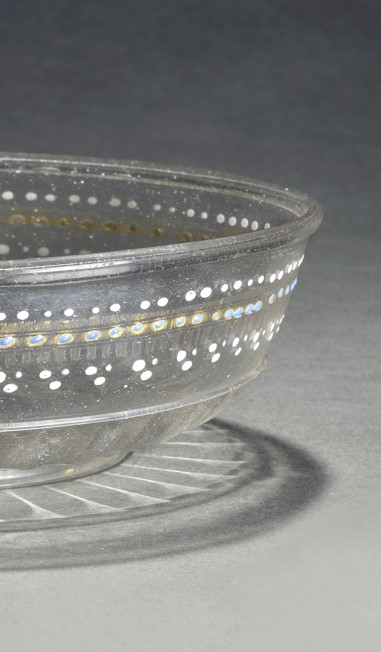
Fruit bowl with high kick-in base
Colourless glass with a hint of straw and purple
Façon de Venise, probably Tuscany or Spain or Venice
Provenance: Hans Gerny collection, Krul collection,
Fritz Biemann collection (fig. 1), Toso collection
Deep bowl with conical sides, an everted rim and a
high kick-in base.
Glass can be decolourized with manganese oxide.
Because of a swirl of purple coloured glass, it
seems that the glass was decolourized this way,
leaving at some point a little too much of it,
which coloured the glass purple instead.
We found no comparable glass bowl in the con
sulted literature. Still lifes, often painted by art
ists who worked in Rome around 1700, show
that these deep bowls were used to hold fruit.
Similar bowls occur in the work of Christian
Berentz (Hamburg 1658-1722 Rome), like in the
painting executed in 1691 (see cat.no. 11, fig. 1).
A bowl like this must also have been included
in the glass collection of Cristoforo Munari.
Time and again, he painted the same glasses,
in different paintings, while living in different
places. This indicates that he had his own col
lection of glass (Barovier Mentasti 2006, p.
187). Filled with apples, pears and grapes, the
glass bowl is the centrepiece of a painting be
longing to a private collection in Como
(Baldassari 1998, cat. no. 97, Barovier Menstati
2006, p. 191, fig. 4). On a painting in the Gallerie
Estensi in Modena it contains peaches and
grapes again, topped by its decorative leaves
(fig. 1) (Baldassari 1998, cat. no. 80, Barovier
Mentasti 2006, p. 193, fig. 6).
Most of the glasses depicted by the Roman
group of painters are believed to have been
made in Venice (Barovier Mentatsi 2006, p. 191,
192). The Gerny glass probably originates from
a different centre of glass making. The straw
colour of the glass indicates most probably a
Tuscan or Spanish origin.




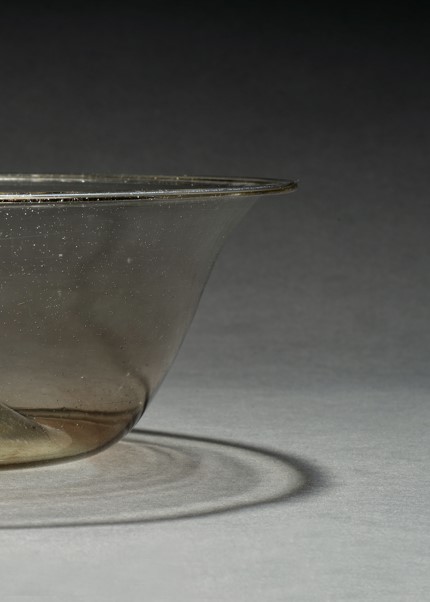
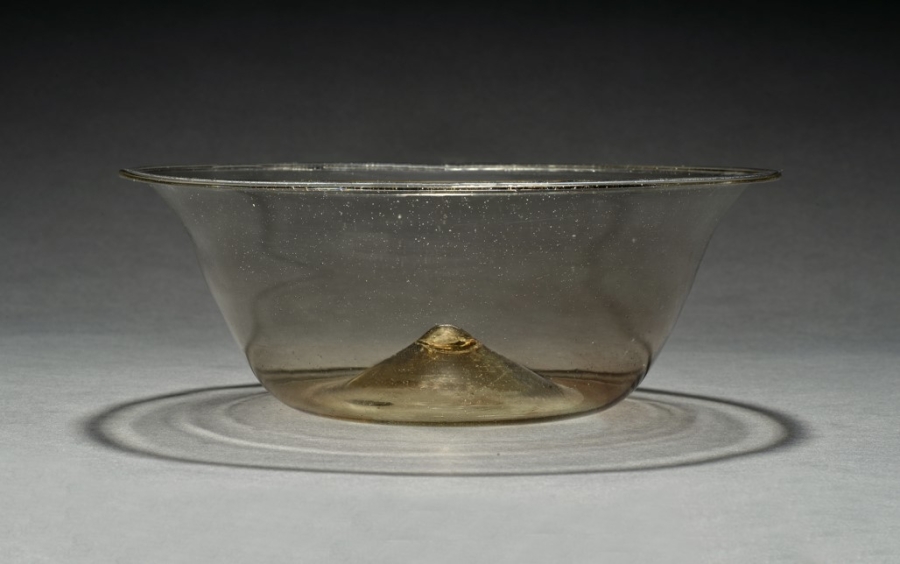
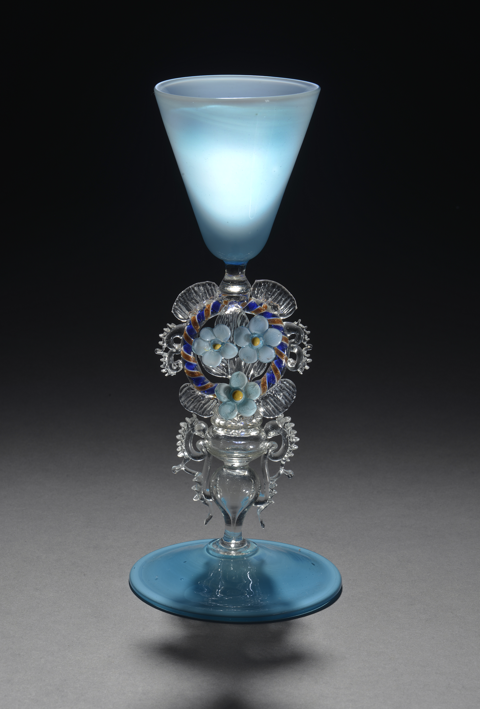

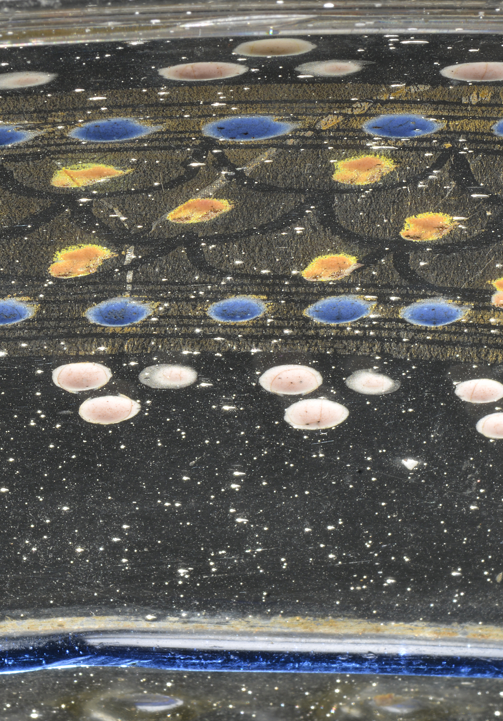

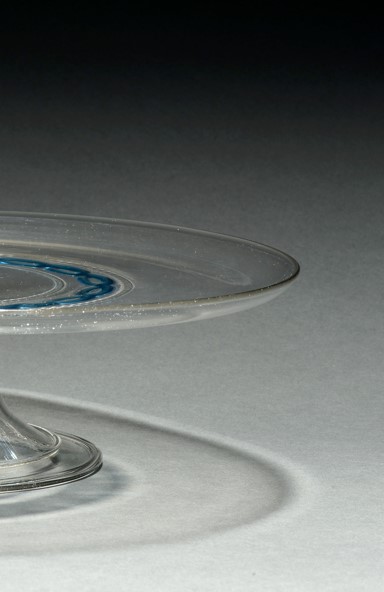
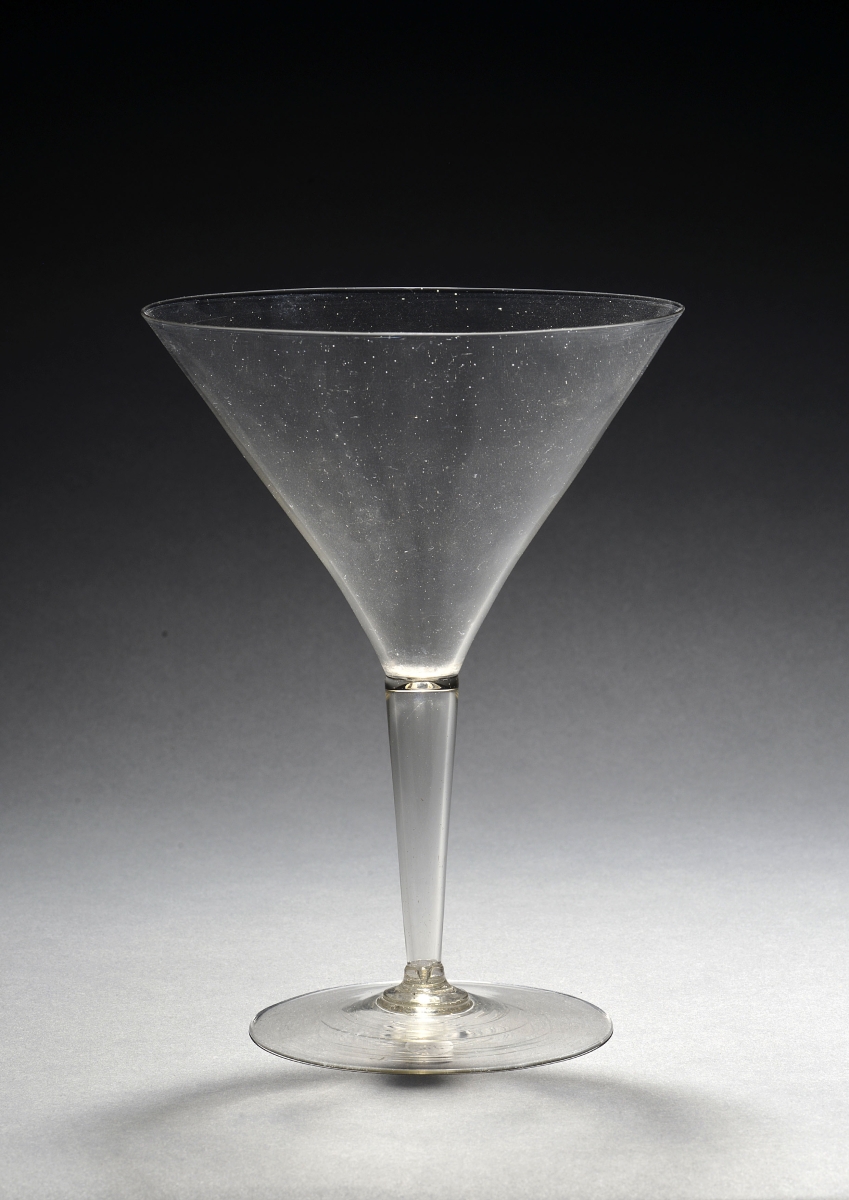
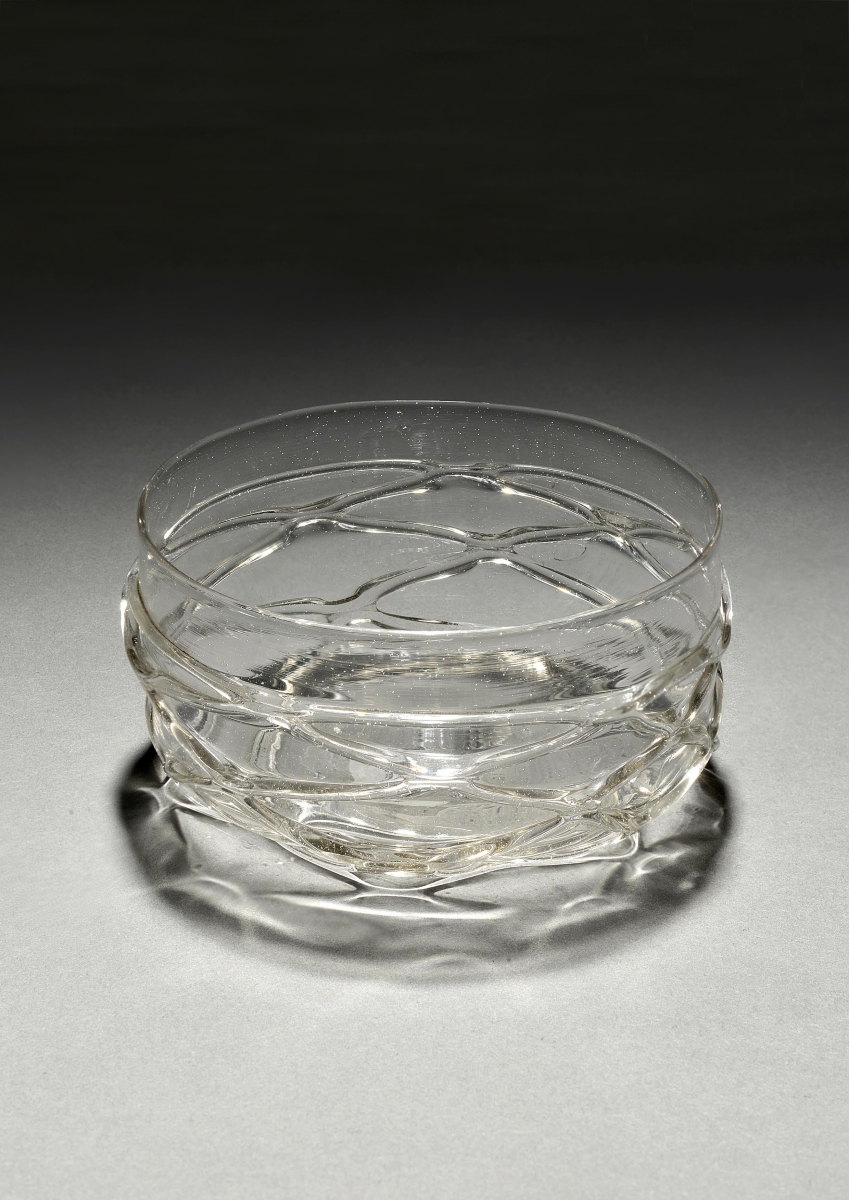
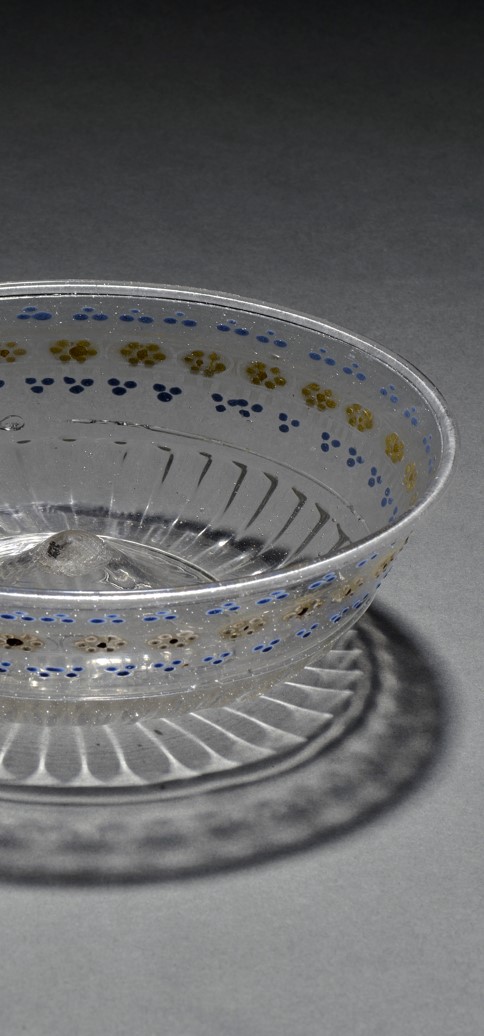
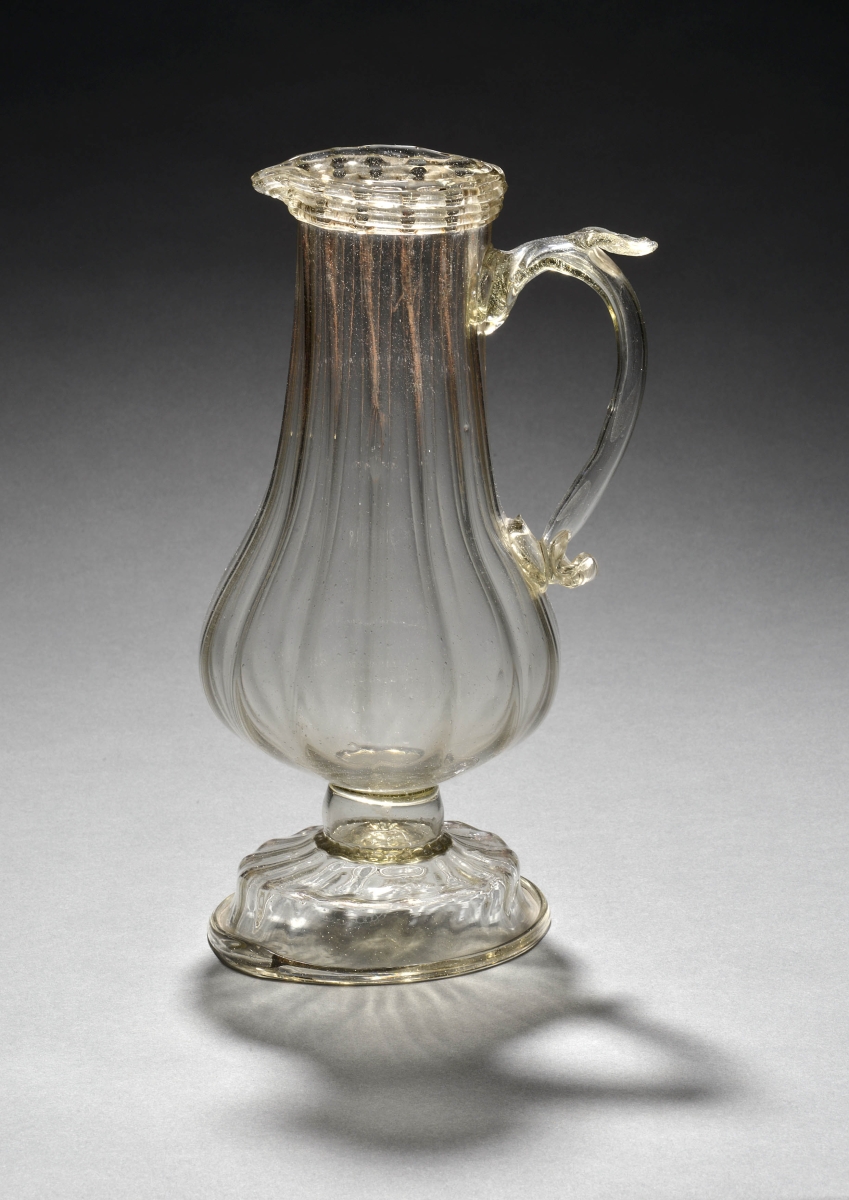
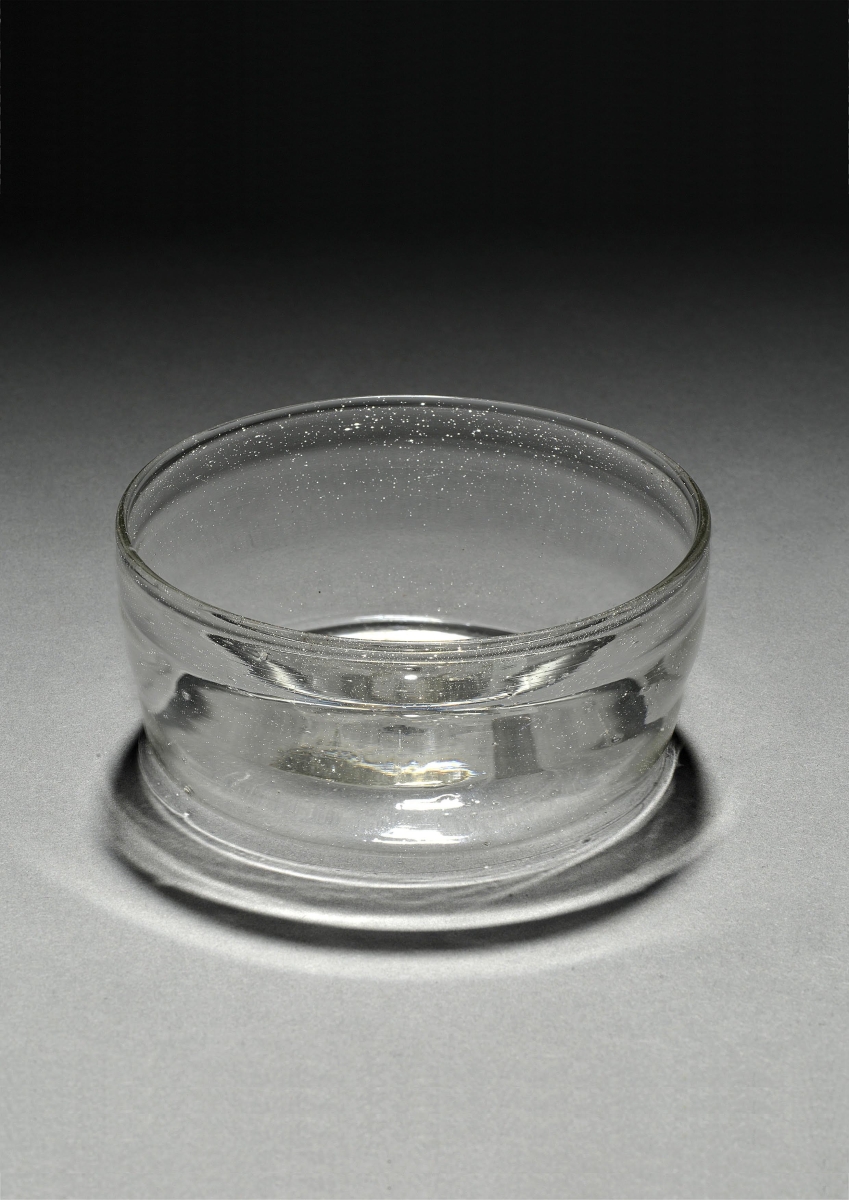
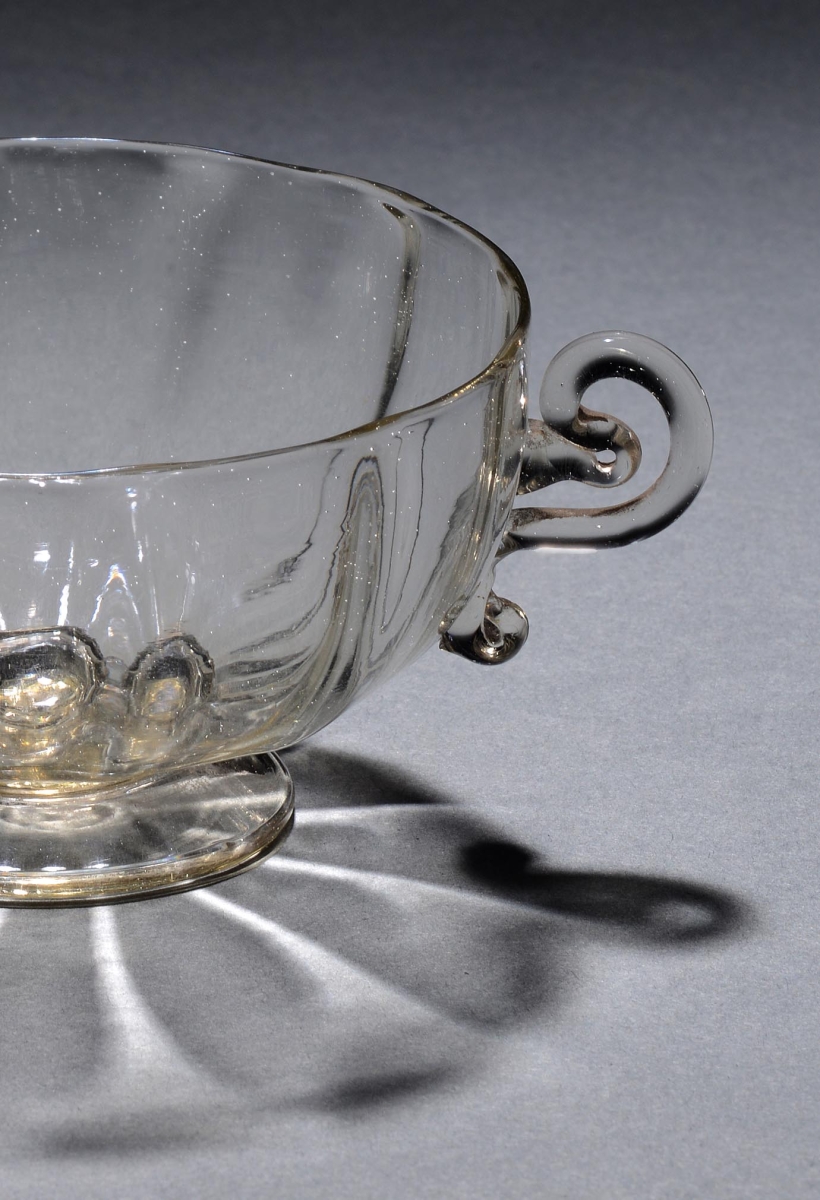
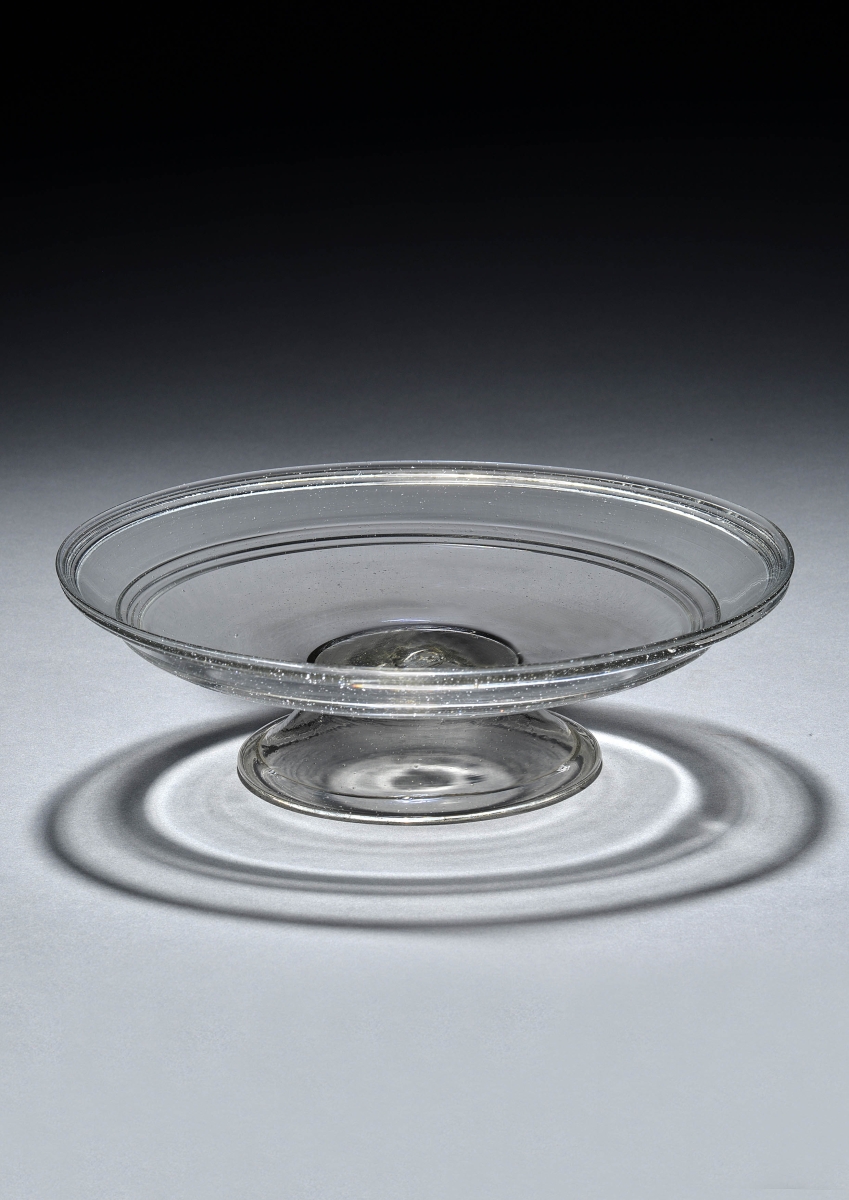
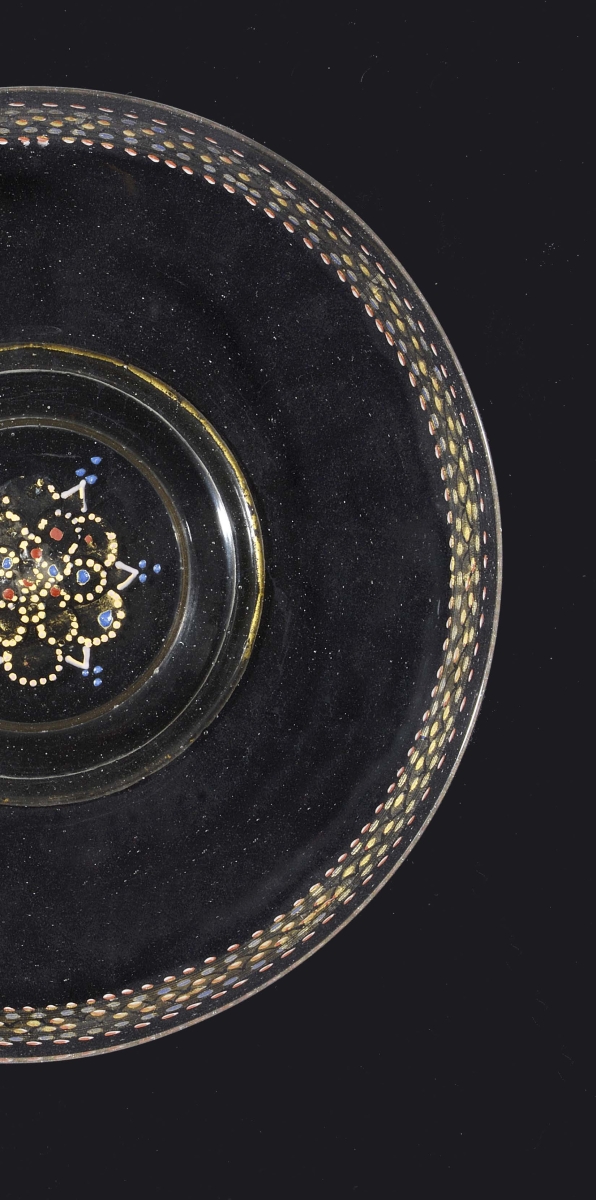
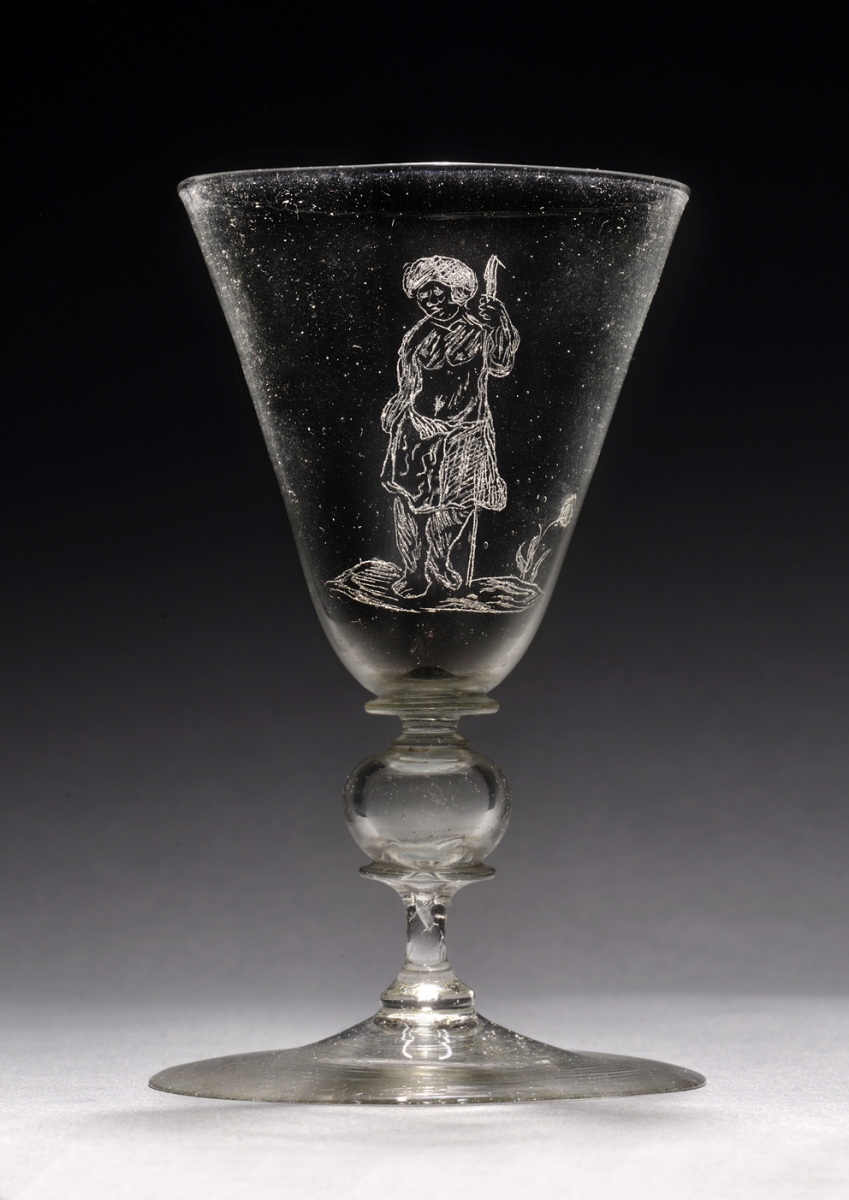
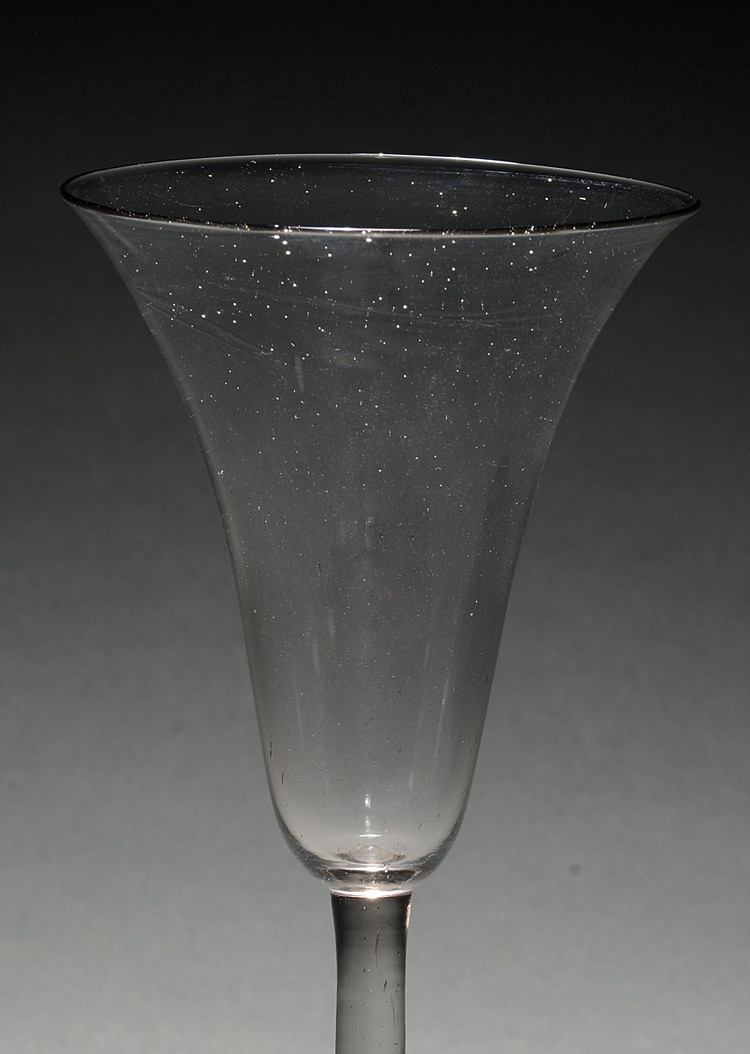
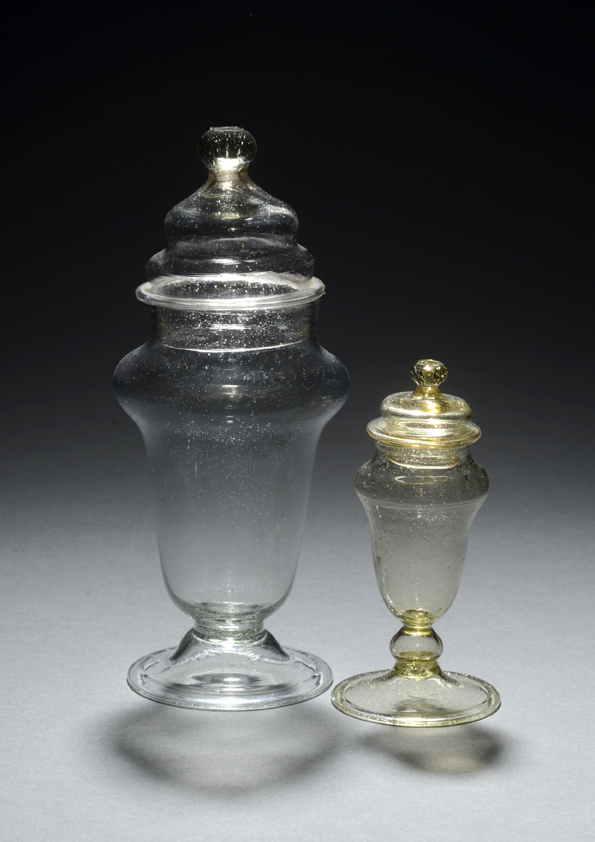
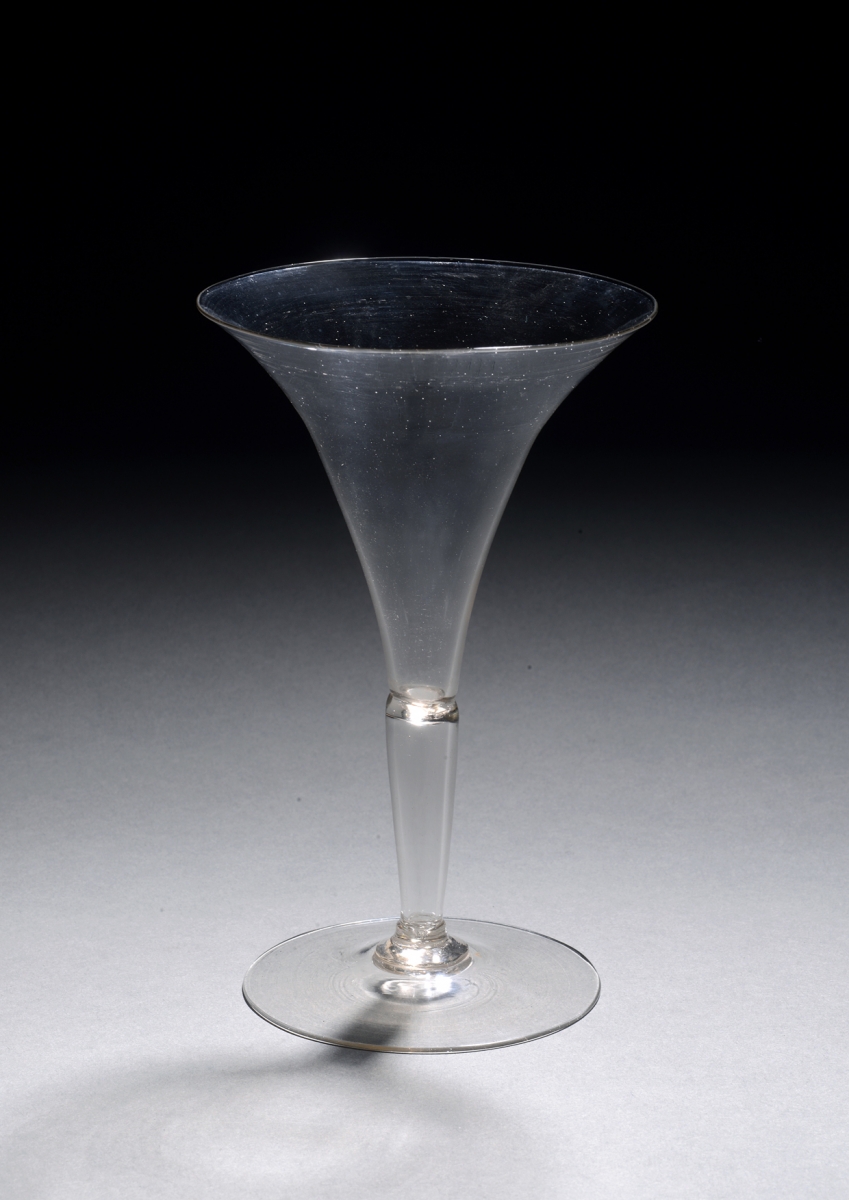
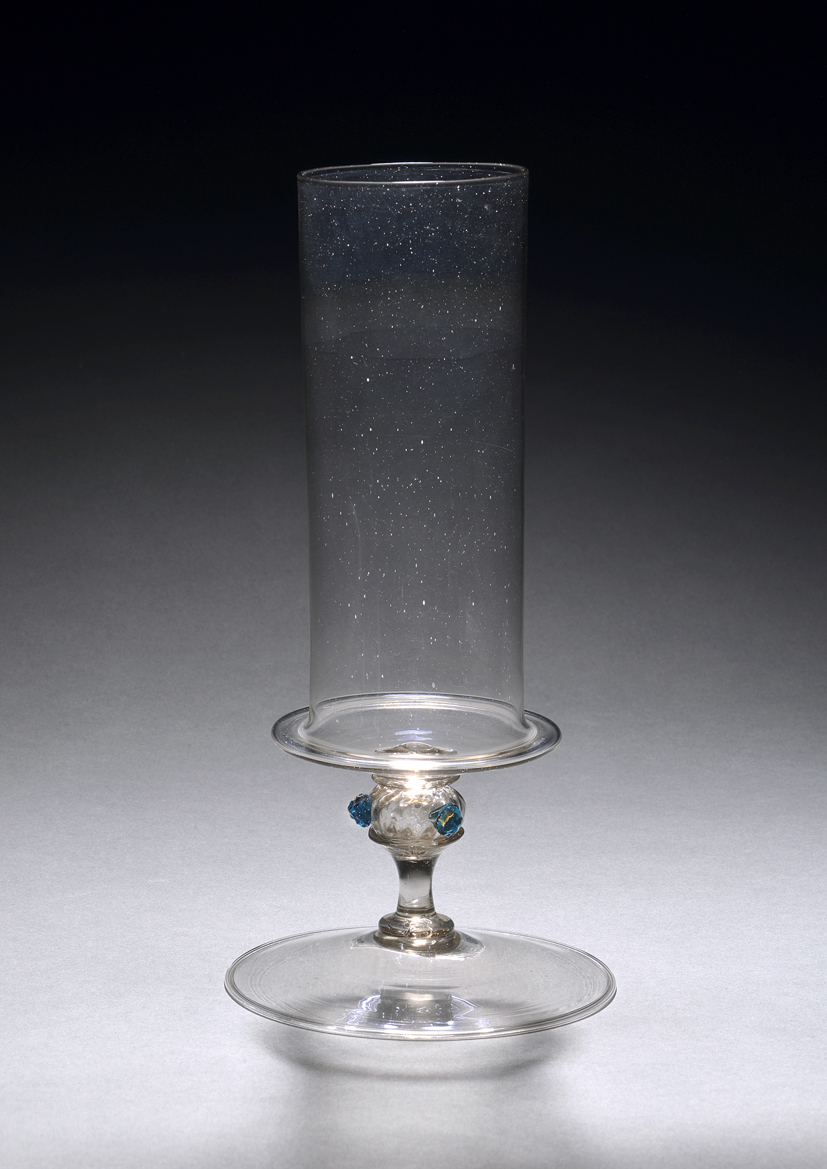
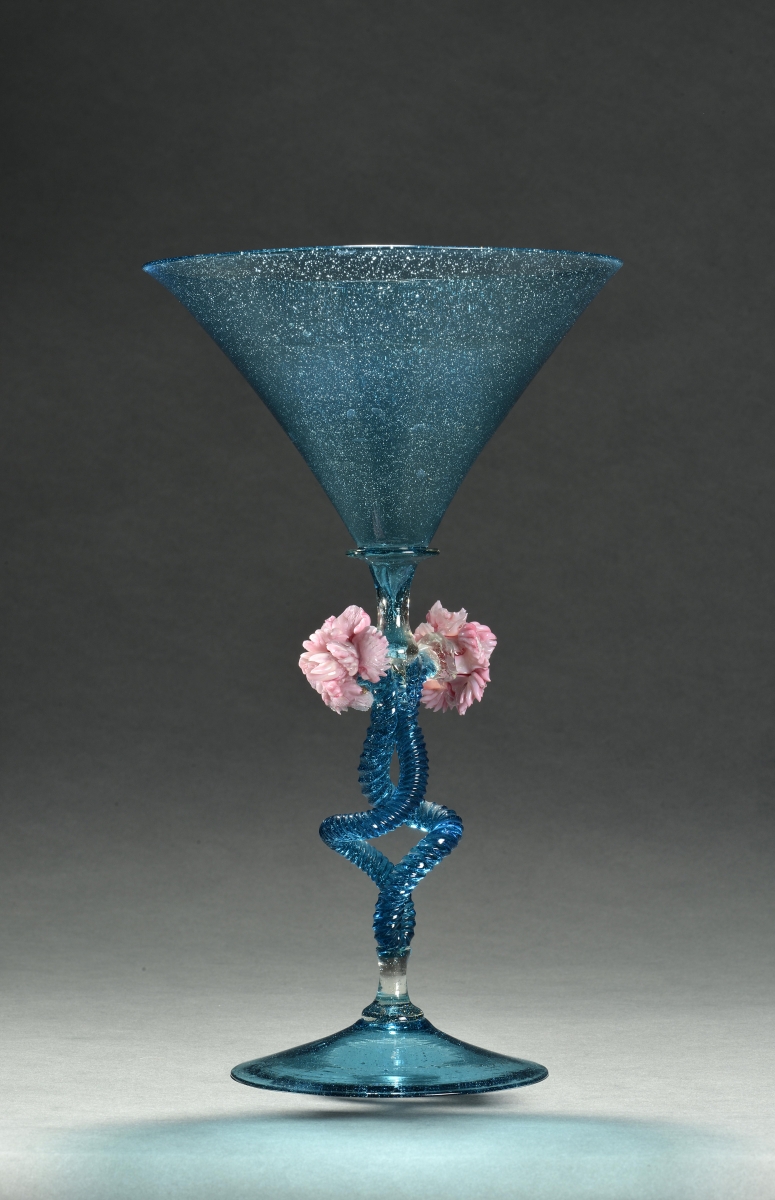
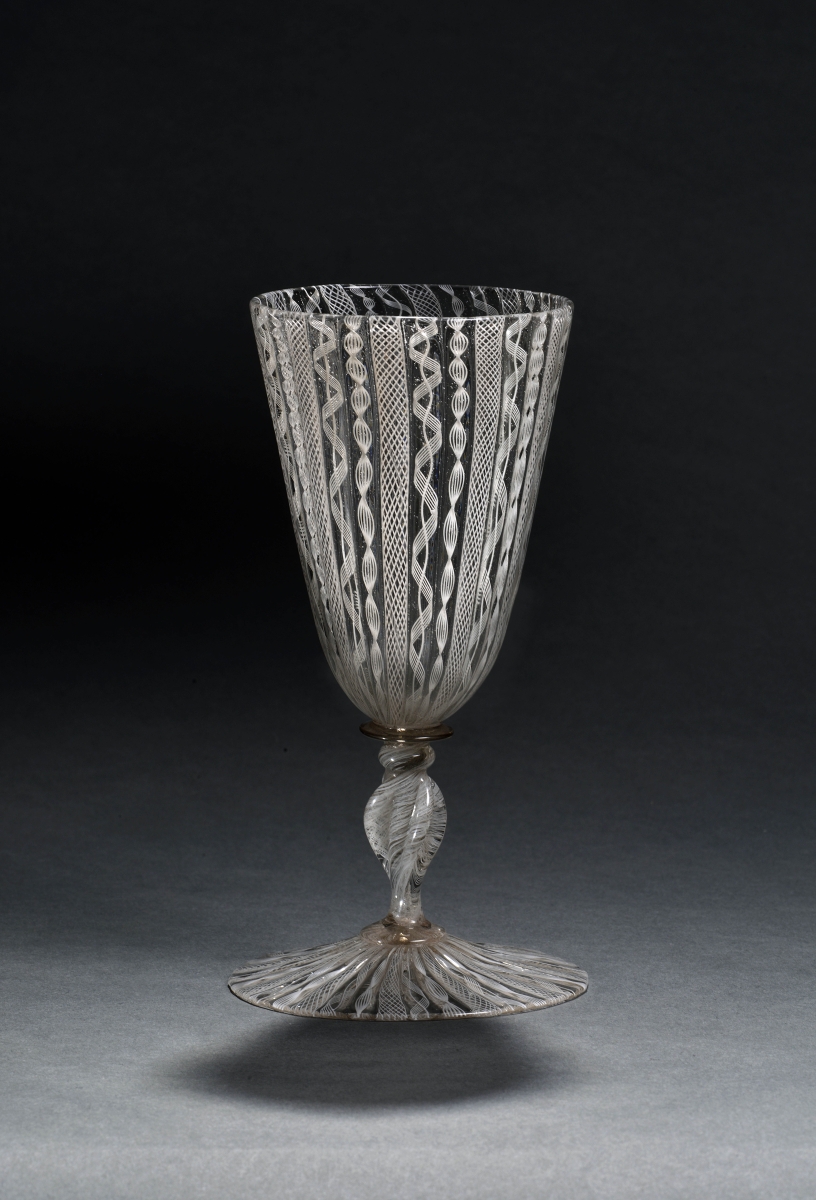
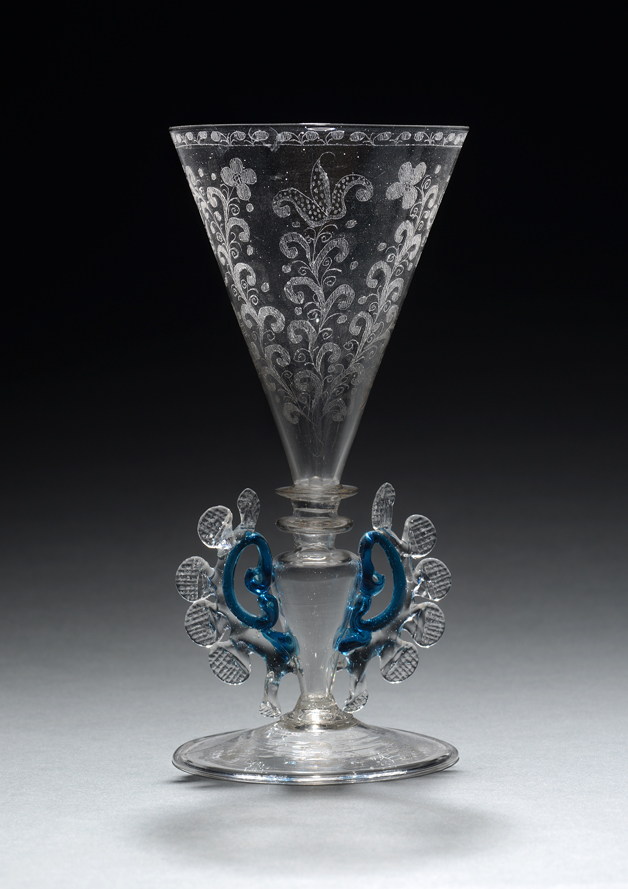
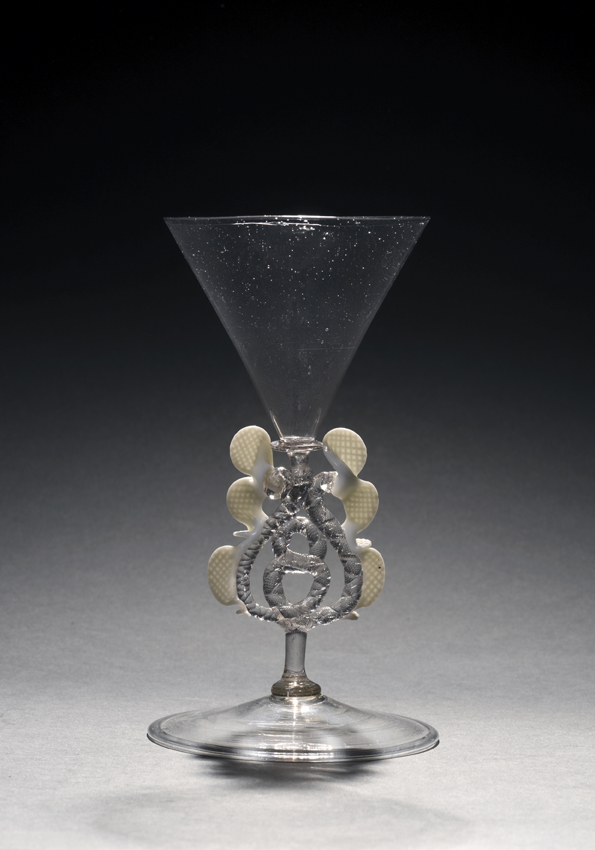

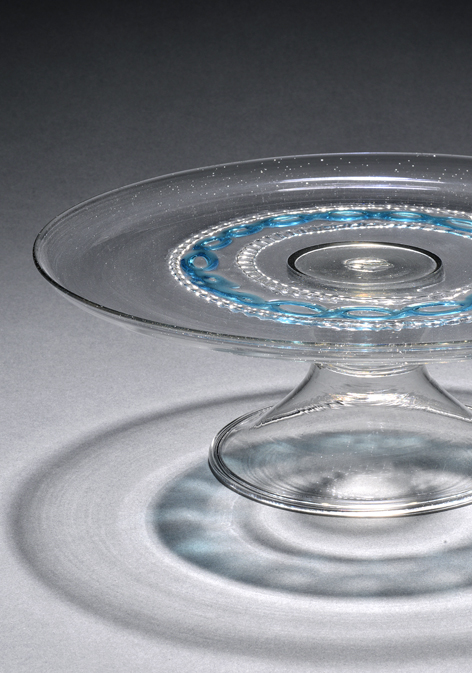
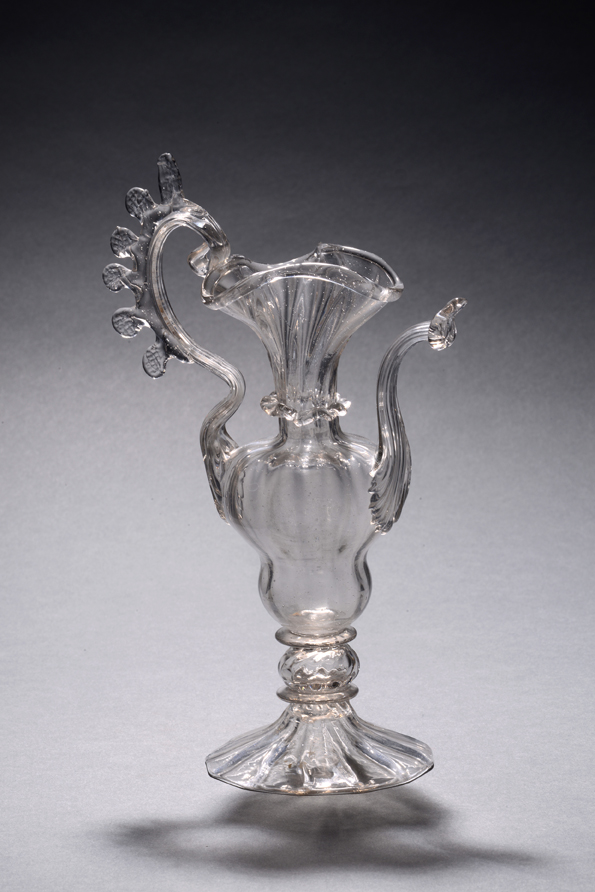
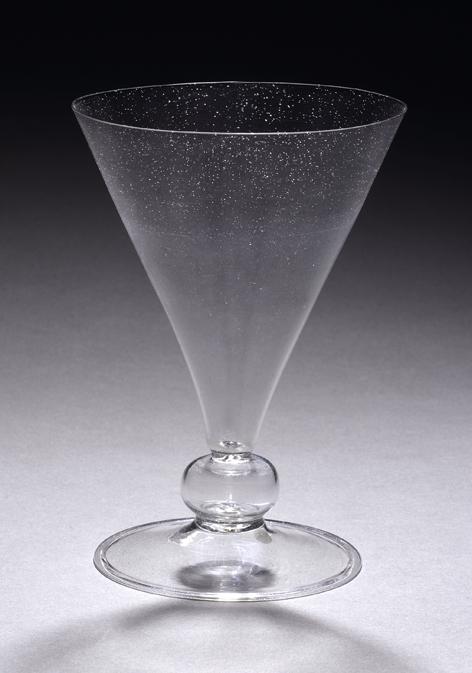
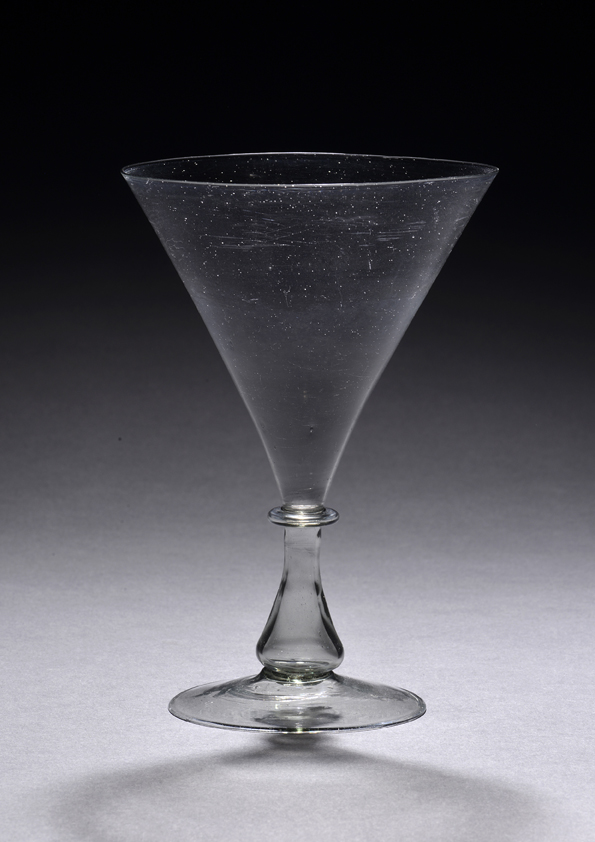
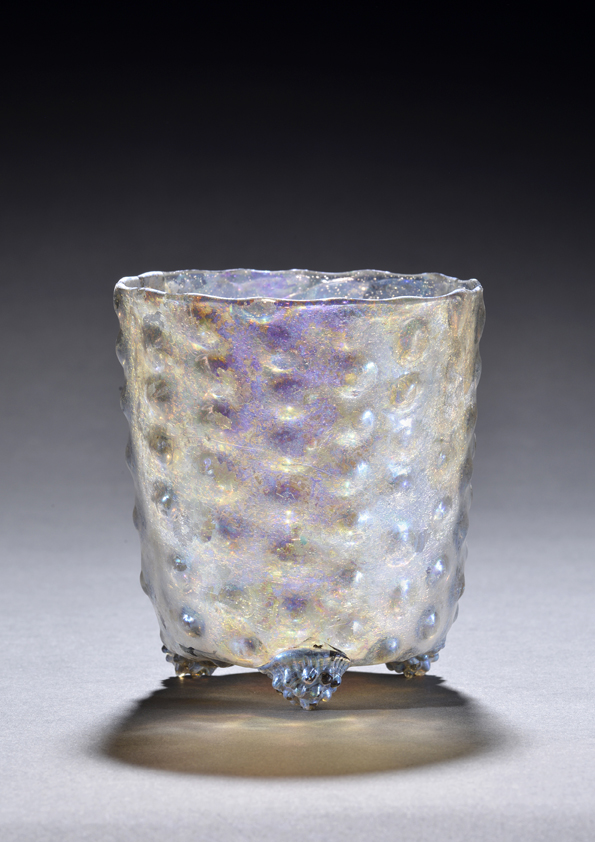
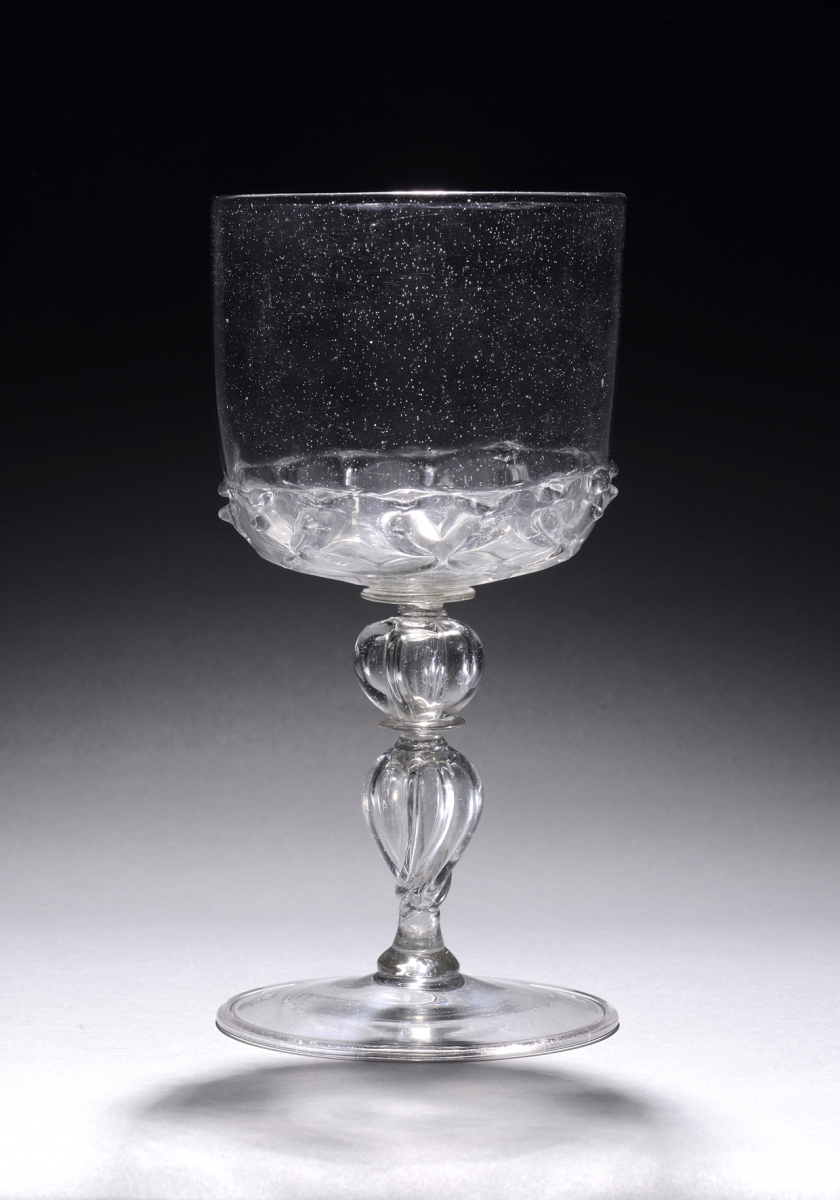

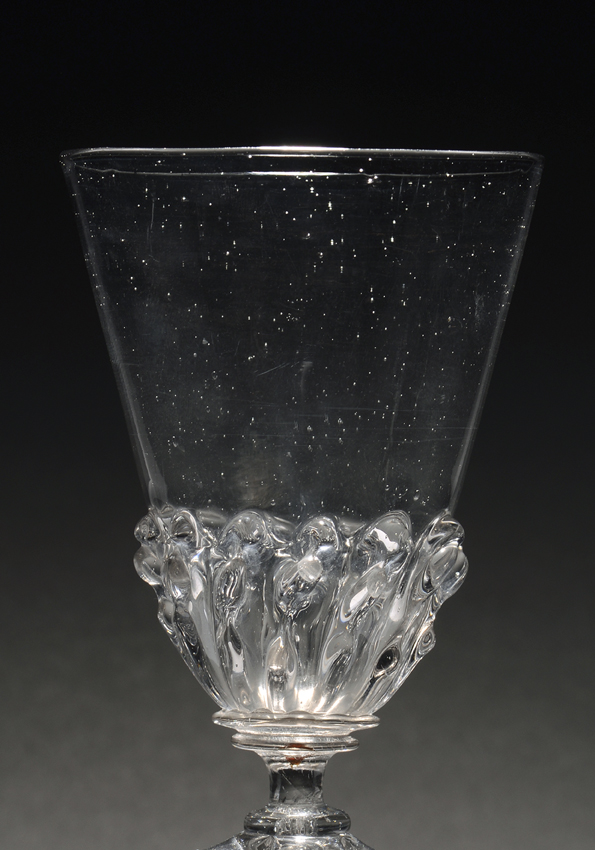

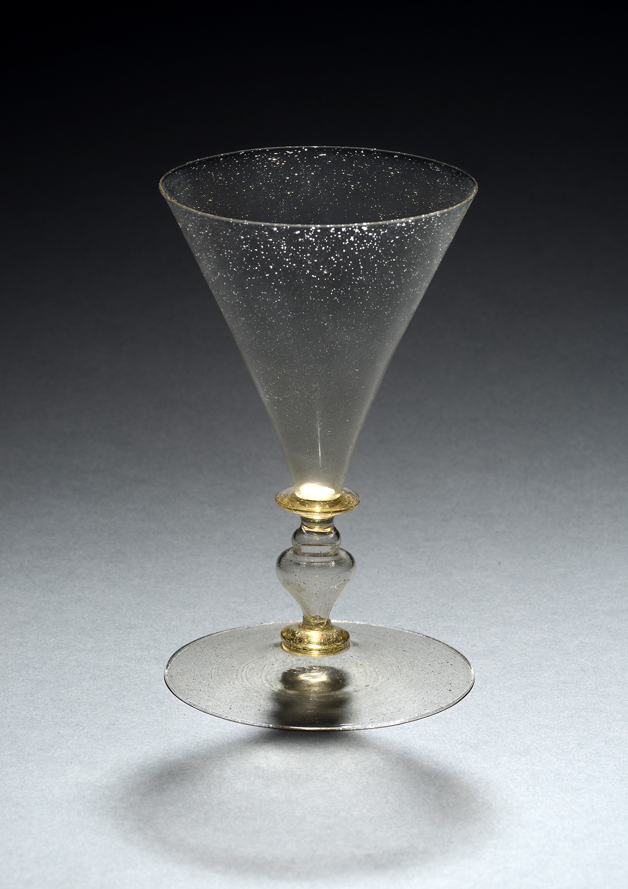
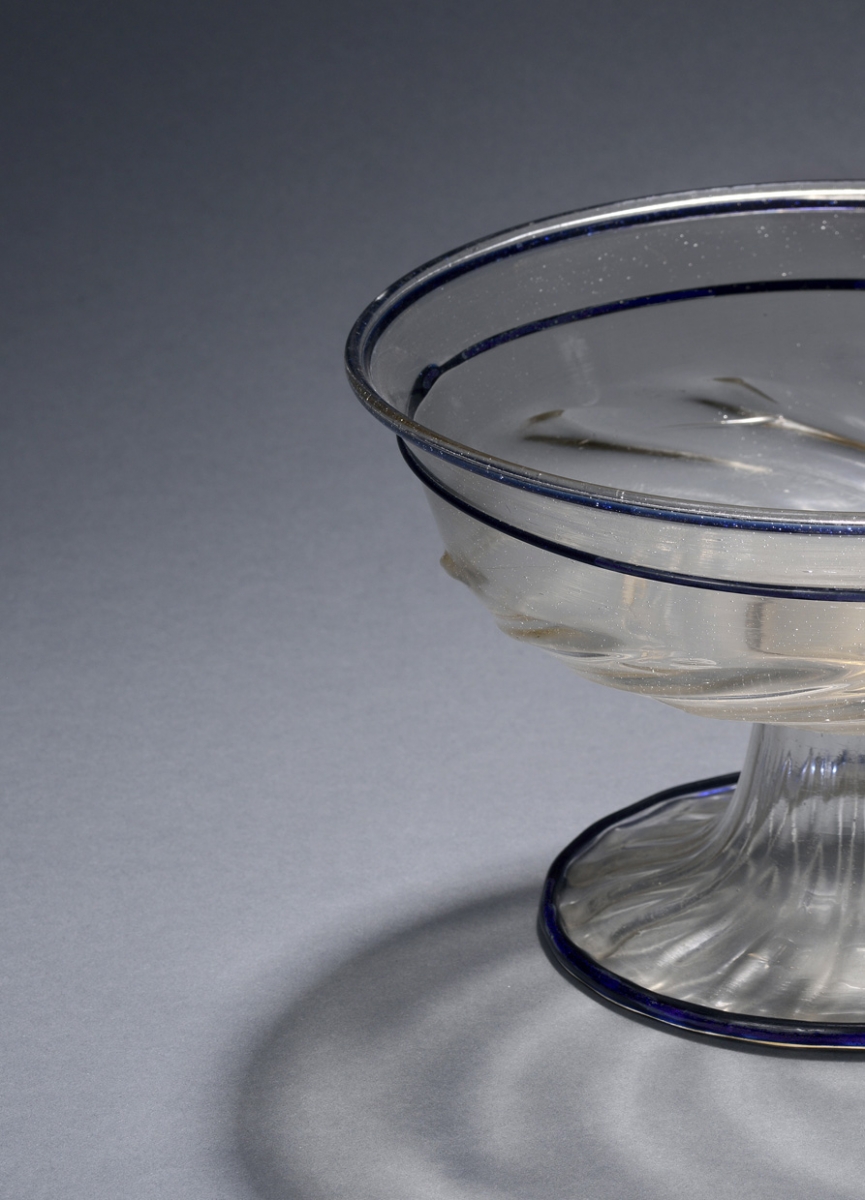
 NIEUWE SPIEGELSTRAAT 55
NIEUWE SPIEGELSTRAAT 55